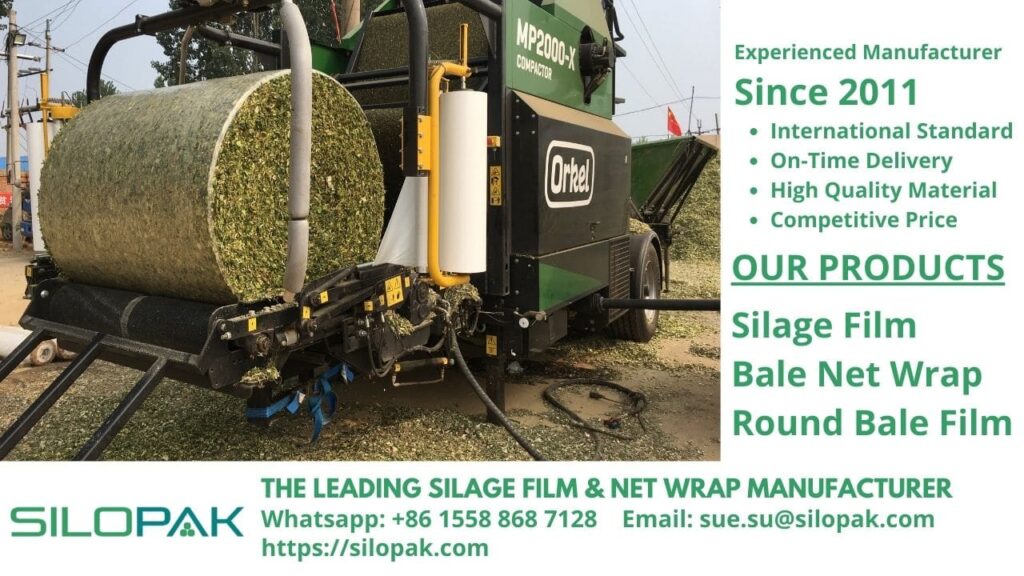
Forage fodder is needed because it contains good nutrition for growth. However, sometimes the availability of feed is not sufficient. For this reason, farmers must be able to deal with these problems. One of them is by doing green fodder preservation.
In certain seasons, the availability of feed will decrease. This causes livestock to lack food intake. So, the growth process is inhibited and can even cause disease. By preserving feed, breeders do not need to worry about it. The preserved feed can be stored for a specified period. Thus, if the availability of feed decreases, farmers can take advantage of the preserved feed reserves.
contents
Purpose of Green Fodder Preservation
Green fodder preservation is one part of livestock production. This preservation is intended so that the provision of forage as animal feed can occur evenly throughout the year to overcome the shortage of feed during the famine season. Therefore, farmers must carry out feed preservation.
As is known, during the rainy season, the availability of forage feed is sufficient. However, when the dry season enters, the availability begins to decrease. Apart from availability issues, feed preservation also has other purposes. Namely, feed ingredients that generally come from agricultural waste have low crude protein and high crude fiber content.
This crude fiber content will be difficult to digest by livestock, especially ruminants. Therefore, preservation is needed to make it easier for livestock to consume their feed.
How to Preserve Forage Fodder
Before talking about green fodder preservation, there is another term for the feed, namely silage. Silage is a preserved feed whose raw materials are green plants, agricultural waste, and other natural materials.
Prepare Foraged Ingredients
The first step that must be done is to prepare forage feed ingredients. Wither the feed material, then cut it by 5-10 cm. Add carbohydrates as a bacterial substrate such as bran, cornstarch, or molasses, approximately 3%. Mix evenly, and put into the silo compacted and tightly closed.
Prepare the Silo
A silo is a container that can be tightly closed and airtight. In addition to being airtight, the container must also be impermeable to liquid seepage. Usually, the silos that are often used are made of plastic. Apart from meeting the requirements of a silo, plastic is considered more economical and practical.
The size of the silo used in green fodder preservation should be adjusted to the needs. Farmers usually use plastic barrels which are considered very flexible because they are easy to lift. In addition, the use of plastic barrels can also increase the amount of silage to meet the needs.
Silage Storage and Feeding
Silage that has been put in a silo is then compacted and tightly closed for 21-30 days. After this time, the silage from the silo can be opened and fed to livestock. If the storage process is successful, there is no leakage; then the silage can last up to 1 year, as long as it is in an airtight place.
Silage with good quality has distinctive characteristics, namely:
- The smell is slightly fragrant.
- The taste is sweet and slightly sour.
- The color is yellowish-green, not moldy. When open, the temperature is not hot (less than 30⁰C); when held dry and the texture is soft and did not agglomerate, the pH ranged from 4 – 4.5, and the nutritional value of the silage increased.
Silage can be used as one of the only coarse feeds for beef cattle rations. Giving to dairy cows should be limited which is no more than 2/3 of the amount of rough feed. Silage is also a good feed for sheep but not good for horses or pigs.
Silage is the preferred feed for livestock, especially when the weather is hot. If the cattle are not used to consuming silage, then it is given little by little mixed with the forage that is usually eaten.
Applications of Silage Use
Green fodder preservation that has become silage can be directly given to livestock. Of course, by paying attention to the response of livestock first. Not all farm animals show a good response when eating silage because silage has a distinctive aroma and taste.
At the time of opening and taking silage from the silo, it must be done carefully. When the silo lid is opened to collect silage, it must be closed again immediately so that no air enters the silo. Before being given to livestock, silage should be aerated first. For cattle that have never eaten it, give it a little at a time, and mix it with the forage that it usually eats.
The provision of green fodder preservation for livestock can be made in stages. For example, 75% regular feed and 25% silage feed. Then mix the two. If the cattle are used to eating silage, the amount of feeding can be increased. For example, 50% ordinary forage and 50% silage feed. You can increase the number of comparisons continuously until the cattle want to eat 100% silage.
In the process of storing silage, it must be in a very closed condition. If closing the silo with just the lid is not enough, you need another cover. You can use silage film to help.
Silopak is a company that provides film silage in several sizes. Its use is surely for green fodder preservation. By using silage film, silage preservation will be further maintained. Entrust your silage packaging products to us. Contact us immediately to place your bulk order. We can be contacted by telephone, WhatsApp, or e-mail list.
